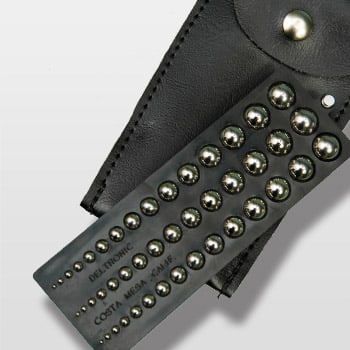Metrology Glossary: Ball Gage
What Is A Ball Gage?
A ball gage is a handheld measuring device used to assess the internal diameter of cylindrical holes. It operates by inserting a ball with a known diameter into the hole; if the ball passes through, the hole is at a minimum diameter of the ball’s diameter. This tool is often used in manufacturing processes to ensure hole dimensions meet prescribed tolerances for maintaining quality control.
What Are Ball Gages Used For?
- Assembly: Ball gauges are used in the assembly process to confirm the compatibility of parts. For example, they ensure bearings properly fit into housings.
- Machining: Within machine shops, ball gauges are used to assess hole diameters produced by CNC machines or lathes. This assessment guarantees that the holes adhere to specified tolerances before proceeding with further machining stages.
- Inspection: Inspectors rely on ball gauges to validate part dimensions post-manufacture. This inspection ensures that components meet designated specifications, ensuring their safety and functionality.
- Automotive: Mechanics utilize ball gauges to gauge the diameter of brake cylinders or other engine elements, aiding in the diagnosis of wear and tear.
- Welding and Metal Fabrication: Ball gauges can be used to verify hole sizes in sheet metal or tubing before welding, ensuring precise fabrication.

Related Terms
A radius gage is a precision tool designed for the specific purpose of measuring the radius of an object, which refers to the distance from the center of the object...
A bore gauge is a precision measurement device used for accurately determining internal hole diameters....
A Coordinate Measuring Machine (CMM) is a precision device used for accurately assessing the geometric attributes of three-dimensional items....






